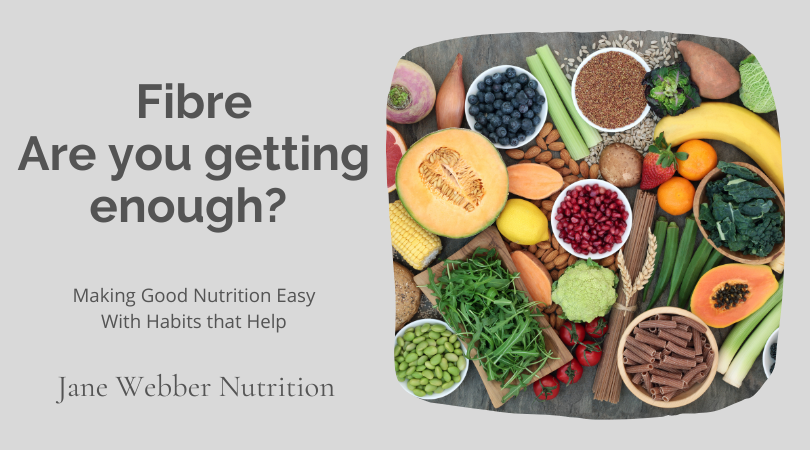
Is your diet fibre rich?
Adding more fibre to your diet is a great way to promote digestive health, manage your weight, and reduce the risk of various health conditions.
I often struggle to get enough fibre in my diet. Guidelines say you should be getting about 30 grams a day, but should I be eating as much fibre as someone who is male and younger than me?
Personally, I don’t think so and here is a little bit of a guideline for you
Adult Women (ages 19-50):
Recommended Daily Intake: 25 grams
Adult Men (ages 19-50):
Recommended Daily Intake: 38 grams
Adult Women (51 years and older):
Recommended Daily Intake: 21 grams
Adult Men (51 years and older):
Recommended Daily Intake: 30 grams
Remember these are just guidelines and if you are eating a varied healthy diet, full of fruit, veggies and whole grains, then you should be OK
Increasing fibre intake gradually can help your digestive system adjust. Additionally, it's important to balance your fibre intake with adequate hydration, as fibre absorbs water and can cause discomfort if you're not drinking enough fluids.
Here are some ways to increase your fibre intake:
Eat more whole grains:
Choose whole-grain bread, pasta, and rice instead of their refined counterparts.
Opt for whole grain cereal and oatmeal for breakfast.
Incorporate legumes:
Add beans, lentils, and chickpeas to soups, salads, and stews.
Make bean-based burgers or hummus for a fibre-packed snack.
Load up on fruits:
Eat the skin of fruits like apples and pears to increase fibre content.
Consume a variety of fruits, including berries, oranges, and bananas.
Include more vegetables:
Add leafy greens, broccoli, carrots, and other vegetables to your meals.
Snack on raw veggies with hummus or peanut butter.
Snack on nuts and seeds:
Almonds, chia seeds, and flaxseeds are high in fibre and make excellent snacks.
Choose high-fibre cereals:
Look for cereals with at least 5 grams of fibre per serving.
Check the nutrition label for fibre content.
Use whole ingredients in cooking:
When baking, replace some or all of the white flour with whole wheat flour.
Cook with brown rice instead of white rice.
Add fibre to smoothies:
Blend fruits, vegetables, and a scoop of oats or chia seeds into your smoothies.
Eat more fibre-rich snacks:
Opt for popcorn, whole-grain crackers, or rice cakes.
Top them with nut butter, cheese, or hummus.
Choose high-fibre breakfast options:
Start your day with bran cereal, whole grain toast, or oatmeal.
Add berries or sliced bananas for extra fibre.
Read food labels:
Pay attention to the nutrition labels on packaged foods and choose products with higher fibre content.
Stay hydrated:
Drinking plenty of water is essential when increasing fibre intake, as it helps prevent constipation.
Gradually increase fibre:
Adding too much fibre to your diet too quickly can cause digestive discomfort. Gradually increase your fibre intake over a few weeks.
Remember that the recommended daily fibre intake varies depending on factors like age and gender, but a general guideline is around 25 grams for adult women and 38 grams for adult men. Consult with a healthcare professional or a registered dietitian for personalized advice on your dietary needs.